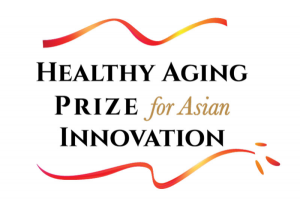2021 HAPI Grand Prize Winner
In aging societies around the world, there has been an increase in the incidence of chronic wounds associated with comorbid conditions such as diabetes. Chronic wounds tend to be prevalent in nursing homes as patients have both comorbidities and reduced mobility.
Wound care is a particularly acute issue in Singapore, a country that has been undergoing a rapid shift from an aging to an aged population. Hospitals and community care providers are experiencing an increase in elderly patients needing help with wound care, and Singapore now has one of the highest rates of diabetes-related lower extremity amputation in the world. Wound-related admissions have doubled between 2000 and 2017 in Singapore due to a high prevalence of neuro-ischemic ulcers and pressure ulcers, resulting in a clinical and economic burden on the healthcare system.
These wounds require regular re-assessments and treatment adjustments. As nursing home staff may not be adequately trained to handle complex chronic wounds, frequent visits by wound care specialists are required, which is time-consuming and expensive. But current methods of manual wound measurement using rulers and probes can be painful, and there is a risk of infection. There is also inter- and intra-rater variability between clinicians and between visits. Manual assessments of tissue classification percentages based on sight only can be difficult and varied. The shortage of expertise and standardization can lead to inaccurate wound assessments, resulting in deteriorating wounds being left undetected, which may lead to the need for amputation.
Tetsuyu Healthcare Holdings—a Singapore healthtech company that aims to create sustainable social impact through greater access to quality care via affordable innovation—decided to address this issue by harnessing new digital technology and artificial intelligence (AI) in a way that would help prevent wound infections and amputations. To do so, they brought together a group of technical and clinical partners to develop AI-assisted software that supports evidence-based wound management and monitoring by clinicians such as nurses and podiatrists. In addition to the company’s internal staff, they worked with the Institute for Infocomm Research (A*STAR), which has extensive experience in image processing used in healthcare, and with an Australian mathematician who developed the depth framework to enable measurement of the wounds. They were also guided by leaders in the field of wound management.
By repurposing an AI ophthalmology machine-learning model to automate what was previously a manual decision-making process, they created CARES4WOUNDS. This innovation comprises a mobile application downloaded on an iPhone or iPad and a web-based monitoring tool. The mobile application automates wound measurements and tissue classifications, delivering high-accuracy results in just under one second.
CARES4WOUNDS makes wound management and assessment 11 times quicker. These time reductions arise from easy access to patient history and accessing of accurate wound information, automated processes, and lack of travel time with use of teleconsultations. This therefore allows for more frequent consultations and timely interventions. For example, CARES4WOUNDS implemented a pilot study in Japan with the University of Tokyo. As compared to existing methods, where a wound, ostomy and continence (WOC) nurse could only visit a patient every few months, CARES4WOUNDS allowed the WOC nurse to conduct telehealth checks to monitor patients’ wound healing progress remotely and advise if any intervention was required. This resulted in positive cases like a pressure ulcer wound healing within seven visits as the WOC nurse was able to remotely monitor and advise that other treatment plans should be used when the wound was not healing well.


In addition to speeding up the wound monitoring, assessment, and documentation process, the fact that it is a non-contact method of assessment lowers the risk of infection compared to manual assessments and reduces the patient’s pain. The wound assessment workflow also follows clinical standards to help less skilled users deliver high-quality assessments and treatments.
CARES4WOUNDS also translates assessments into clinically accepted PUSH or Wound Bed scores to objectively evaluate healing status. Embedded algorithms within the application help guide users on the risk of infection, treatment objectives, and treatment products, thus improving productivity and consistency of treatment provided by clinicians of different levels. Additionally, users use the web monitoring tool to visualize the wound healing progress over time using customized charts and an image gallery. Senior clinicians can conduct remote monitoring and teleconsultations to order objective and timely interventions.
CARES4WOUNDS is currently in use at a number of hospitals and nursing homes in Singapore and Hong Kong, and they are working to adapt the technology for use in countries throughout the region, with customization for differences in workflow, wound scoring systems, treatments, and so on.
KEYS TO SUCCESS
- CARES4WOUNDS is an innovative approach to intervention in wound care that allows more accurate measurement and assessment.
- The no-touch approach reduces the risk of infection and causes no pain to the patient.
- The product allows individuals with different levels of training to take consistent measurements and share both measurements and images remotely with wound care specialists, thereby improving the quality of treatment and reducing costs.
- The project drew on international experts in AI, wound care, mathematics, and imaging to find a solution to a serious issue facing aging societies.
- The innovation can be adapted to different countries’ wound assessment systems and different organizations’ workflows, and it uses only an iPhone or iPad, making it easy for a wide range of institutions to adopt.

